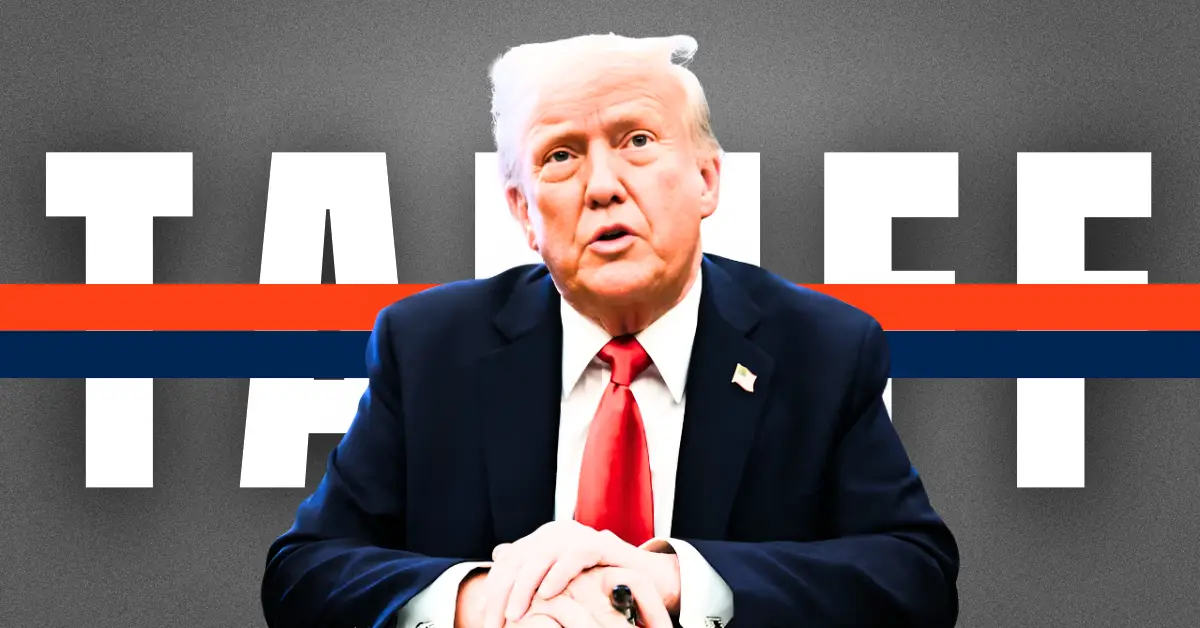The Looming Shadow: A Deep Dive into Trump’s August 1st Tariff Blitz
The global economy is once again bracing for potential turbulence as former President Donald Trump has reignited the specter of tariffs, setting an August 1st deadline for new trade negotiations. This move, announced via his Truth Social platform, has sent shockwaves through international markets, raising concerns about the potential fallout on various sectors, from cryptocurrency to pharmaceuticals. The use of the International Emergency Economic Powers Act (IEEPA) to implement these tariffs adds a layer of legal complexity, further complicating the situation. As the world watches, the question remains: Is this a strategic negotiation tactic or a reckless gamble that could plunge the global economy into chaos?
The August 1st deadline is not just a date on the calendar; it is a line in the sand drawn by Trump, signaling his intent to impose significant tariffs if no new trade deals are reached by then. The proposed tariffs range from 25% to a staggering 40% on goods from various countries, including economic powerhouses like South Korea and Japan, as well as developing nations such as Laos, Myanmar, South Africa, Malaysia, and Kazakhstan. The broad scope of these tariffs underscores the interconnectedness of the global economy, where disruptions in one sector can have far-reaching consequences.
The market reaction to these tariff threats has been volatile, with U.S. stock markets experiencing significant declines. The S&P 500 posted its worst single-day drop in weeks, reflecting investor anxiety about the potential economic fallout. The cryptocurrency market, often seen as a safe haven during times of economic uncertainty, has also felt the tremors. Bitcoin, while showing some resilience, has experienced price fluctuations as investors grapple with the potential impact of a trade war. Some analysts suggest that the market may have already priced in the possibility of these tariffs, indicating a degree of skepticism or resignation among investors. However, the underlying anxiety remains, as the long-term consequences of a full-blown trade war are difficult to predict.
The relationship between tariffs and cryptocurrency is complex and multifaceted. On one hand, some argue that Bitcoin and other cryptocurrencies could serve as a safe haven during times of economic turmoil, offering investors an alternative to traditional assets that are more susceptible to government policies and trade disputes. The decentralized nature of cryptocurrency could provide a hedge against the disruptions caused by tariffs. On the other hand, tariffs can create a climate of uncertainty and risk aversion, leading investors to flee riskier assets, including cryptocurrencies. Moreover, a global economic slowdown triggered by trade wars could dampen overall investment sentiment, negatively impacting the crypto market. The fact that Bitcoin is holding steady may signal resilience, but it is crucial to remember that the situation is constantly evolving.
One of the most alarming aspects of Trump’s tariff threats is the potential for imposing a massive 200% tariff on pharmaceutical imports. Such a move could have devastating consequences for patients and healthcare systems, potentially leading to skyrocketing drug prices and reduced access to essential medications. The pharmaceutical industry is heavily reliant on global supply chains, with many drugs and active ingredients sourced from overseas. A 200% tariff would disrupt these supply chains, forcing pharmaceutical companies to either absorb the costs or pass them on to consumers. The impact would be particularly severe for patients with chronic conditions who rely on imported medications to manage their health.
Amidst the tariff threats, there have been reports of the U.S. offering the European Union a 10% tariff deal. However, this offer comes with caveats, suggesting that negotiations are still ongoing and that the threat of tariffs remains a bargaining chip in the U.S.’s trade strategy. The EU has been a frequent target of U.S. trade policy in recent years, and the prospect of renewed tariffs has raised concerns about a potential transatlantic trade war. A 10% tariff deal might provide some relief, but it also highlights the precariousness of the trade relationship and the potential for future disputes.
Some analysts believe that Trump’s tariff threats are more bark than bite, a negotiating tactic designed to extract concessions from trading partners. The idea is that by creating a sense of urgency and uncertainty, the U.S. can pressure other countries to agree to more favorable trade terms. However, this strategy carries significant risks. If trading partners call Trump’s bluff and refuse to negotiate, the U.S. could be forced to follow through with the tariffs, leading to a trade war that harms all parties involved. Moreover, even if the tariffs are ultimately avoided, the constant threat of trade disputes can erode trust and undermine international cooperation.
As August 1st approaches, businesses and investors must prepare for a period of heightened volatility and uncertainty. Diversifying investments, hedging against currency fluctuations, and carefully monitoring supply chains are just some of the strategies that can help mitigate the risks associated with tariffs. Governments also have a crucial role to play in de-escalating trade tensions and promoting a more stable and predictable international trade environment. Dialogue, negotiation, and a willingness to compromise are essential to avoiding a costly and destructive trade war.
The revival of tariff threats under Trump is not merely a continuation of past trade disputes, but a potential catalyst for a new era of global economic uncertainty. The consequences of these actions could ripple through markets, impacting everything from cryptocurrency valuations to the accessibility of crucial pharmaceuticals. While some view these tactics as calculated maneuvers, the inherent risks are undeniable. As August 1st looms, the world watches, anticipating whether these threats will materialize into tangible actions, or whether they will remain mere rhetoric in the complex tapestry of global trade. The unfolding drama serves as a stark reminder of the delicate balance that underpins the global economy and the potential consequences of disrupting that balance.











